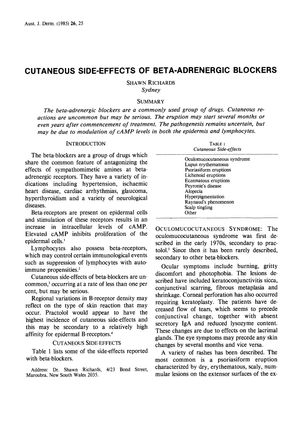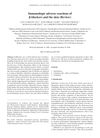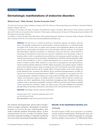Cutaneous Side-Effects of Beta-Adrenergic Blockers
April 1985
in “
Australasian Journal of Dermatology
”

TLDR Beta-blockers can cause rare skin side-effects, which usually improve after stopping the medication.
The document from 1985 reported that beta-adrenergic blockers, medications used for hypertension and heart disease, can cause rare cutaneous side-effects in less than one percent of patients. These effects may appear long after the initiation of therapy and include a range of conditions such as oculomucocutaneous syndrome, lupus erythematosus, various skin eruptions, Peyronie's disease, alopecia, hyperpigmentation, Raynaud's phenomenon, and scalp tingling. Alopecia was noted to be diffuse and non-scarring, with hair regrowth possible after stopping the medication. The exact cause of these reactions is unclear, but may be related to changes in cyclic AMP levels or direct effects on lymphocyte membranes. Discontinuation of the beta-blocker usually results in symptom improvement, but some eye changes could take months to resolve and potentially lead to visual loss. Recognizing these side-effects is crucial for patient care.




